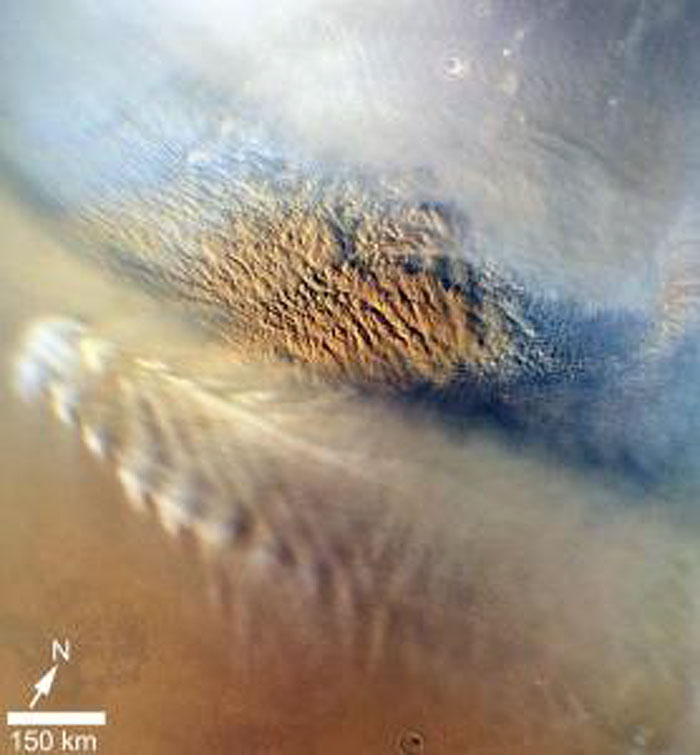-

Curiosity, the NASA rover that landed on Mars last month, is sending us remarkable weather observations from the Martian surface that are attracting interest from scientists. “From a weather point of view, Mars is the most ‘Earth-like’ of the other planets in our solar system, and many features of the weather there are similar to Earth,” says Kevin Hamilton, a pioneer in the area of computer modeling of the Martian atmosphere.
Hamilton, who is Director of UH Manoa’s International Pacific Research Center and a Professor of Meteorology, noted that Curiosity is the fifth ‘Weather Station’ on Mars. Over the last 35 years, a total of four NASA probes had reached the Martian surface and returned weather data.
“These earlier observations had shown a large daily cycle in temperature and air pressure on Mars. The atmospheric temperature near the surface of Mars generally varies by more than 100°F between day and night because of the overall thinner Martian atmosphere and lack of oceans and their moderating influence,” says Hamilton.
“The exciting new result from Curiosity is a regular and truly enormous swing in atmospheric pressure through each day. Measurements on Earth show a daily swing in pressure of only about one-tenth of 1% of the mean pressure, whereas Curiosity is measuring swings of almost 10% of the daily average pressure. We observe such a relative pressure change on Earth only with the passage of an extremely strong hurricane. At the Curiosity site on Mars, this enormous pressure swing occurs regularly every day!”
For Hamilton, these reports of huge pressure swings came as welcome news. Almost 20 years ago, he had predicted that the daily variation on Mars would be particularly large in two “action centers” on the equator located on opposite sides of the Mars. Unlike the earlier NASA probes, Curiosity landed right in one of the equatorial action centers, where another factor comes into play: a resonance in the Martian atmosphere.
"The idea of resonance is familiar in everyday contexts like pushing a child in a playground swing – if you synchronize your pushes with the natural frequency of the swing, it is easy to send the child high into the air,” Hamilton explains.
“In the 1980s, I calculated that on Mars the atmosphere could have a natural frequency with the period of one Martian day. The day-night forcing then could excite a very strong resonant response. Incorporating this idea into a sophisticated computer model, I showed that the effect of this resonant response would be most clearly felt in two equatorial action centers and that the pressure swings there should exceed 8% of the mean pressure. The remarkable Curiosity observations provide strong confirmation of a resonant vibration of the global atmosphere."
Hamilton suggests that the daily resonant cycles could play a role in explaining a long-standing mystery on Mars, namely how the winds become sufficiently strong to lift enough dust from the surface to create the remarkable global dust storms seen every few years on that planet. “Now that my theory of a daily resonant oscillation seems confirmed, it might help explain the trigger for these dust storms," he said.
-
Quelle:
The International Pacific Research Center (IPRC) of the School of Ocean and Earth Science and Technology (SOEST) at the University of Hawaii at Manoa, is a climate research center founded to gain greater understanding of the climate system and the nature and causes of climate variation in the Asia-Pacific region and how global climate changes may affect the region. Established under the “U.S.-Japan Common Agenda for Cooperation in Global Perspective” in October 1997, the IPRC is a collaborative effort between agencies in Japan and the United States.
5725 Views

